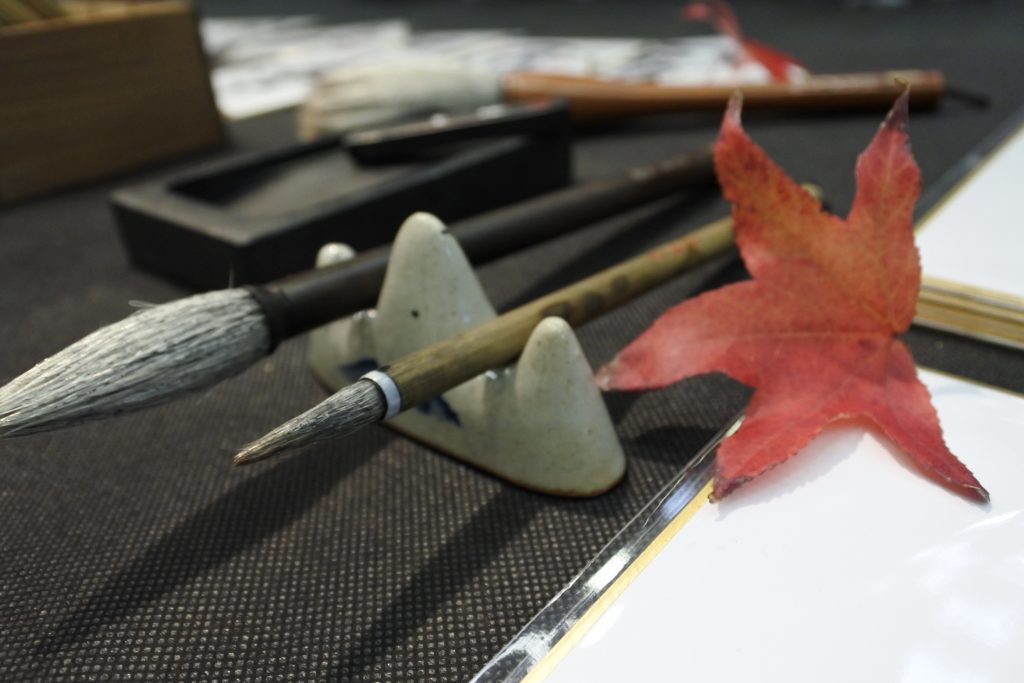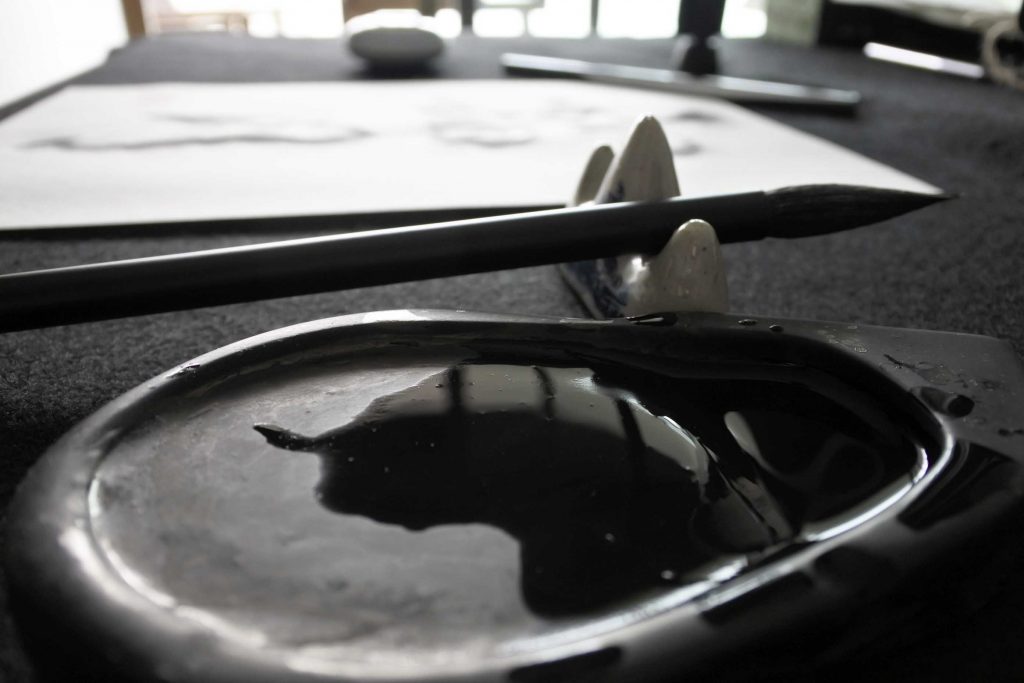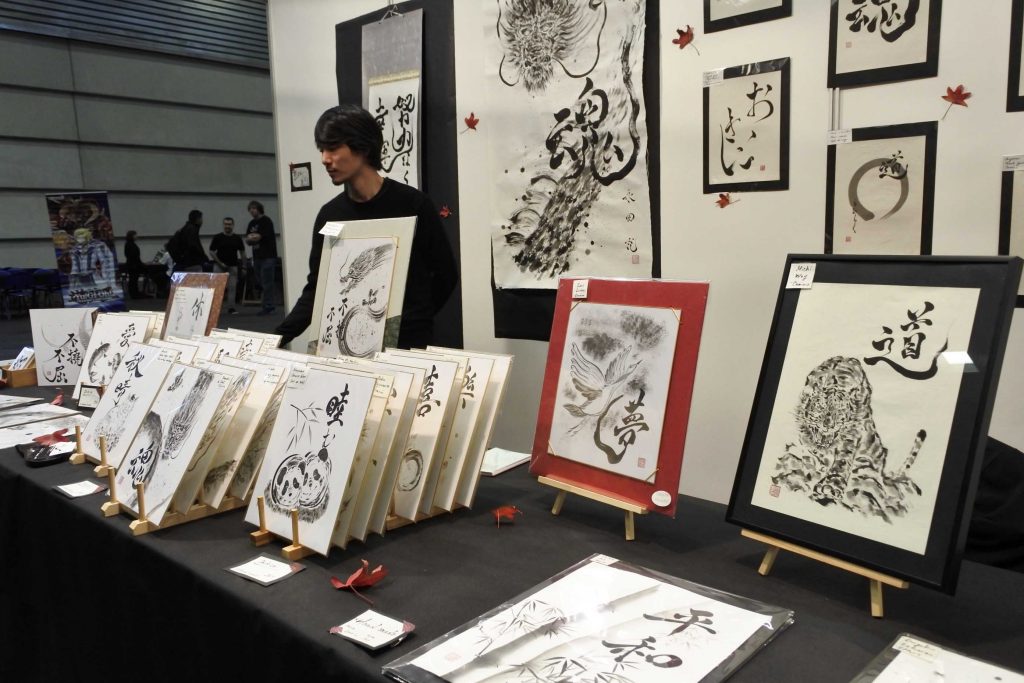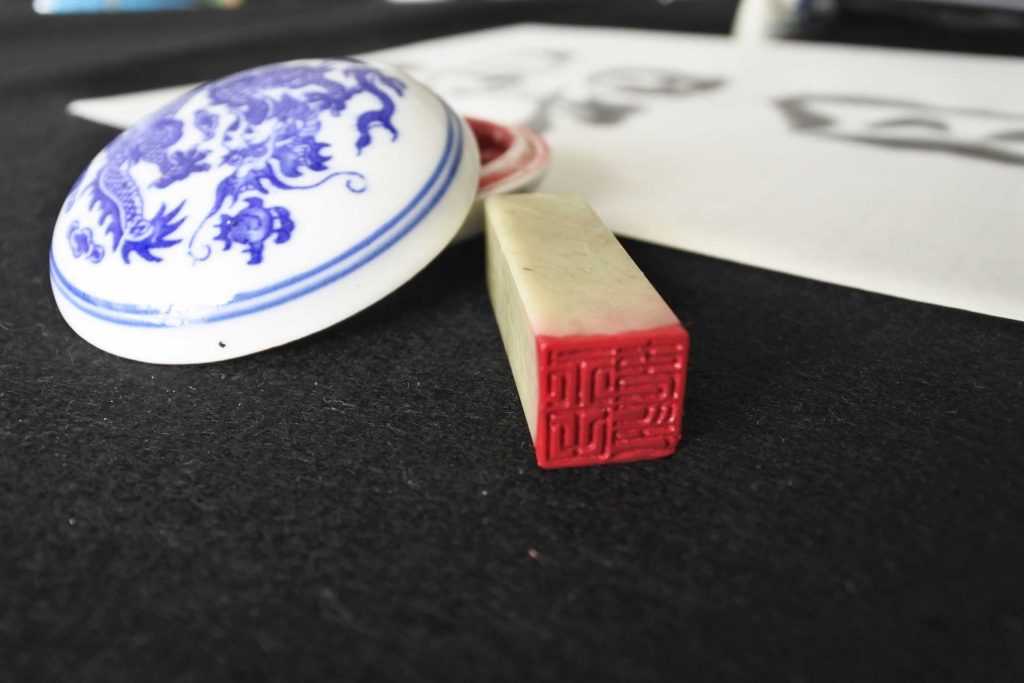MATERIALS FOR SHODOU AND SUMIE
JAPANESE CALLIGRAPHY ART AND SUMI-E
Bunbōshihō ‘the four treasures for study’ the whashi paper, the ink,the suzuri and the brush
JAPANESE CALLIGRAPHY ART AND SUMI-E
Bunbōshihō ‘the four treasures for study’ the whashi paper, the ink,the suzuri and the brush
materials for sumi-e and calligraphy
We employ similar tools in Japanese Calligraphy and Sumi-e drawing, collectively known as “bunbōshihō” or “the four treasures for study.” Special papers and brushes are essential for Sumi-e, where paper type affects drawing effects. The ink used in both disciplines is derived from charcoal sticks, dissolved using a “suzuri” stone container. In Sumi-e, water is added to achieve varying shades of gray, while calligraphy typically employs the darkest ink.

Calligraphy brush
Japanese brushes, known as ‘fude’ (筆), are revered in the world of art and calligraphy. Crafted meticulously by skilled artisans, they carry rich history and cultural significance. These brushes, made from natural materials like animal hair and bamboo, come in various shapes and sizes.
With roots tracing back centuries, Japanese brush history intertwines deeply with Sumi-e ink painting and calligraphy (‘shodo’). Beyond tools, these brushes symbolize discipline, precision, and patience, reflecting Japanese values.
Modern manufacturing complements traditional craftsmanship, making quality brushes accessible worldwide. Artists worldwide value these brushes for their enduring legacy, inspiring creative expressions globally. They symbolize the fusion of tradition and innovation in Japan’s artistic heritage.

THE SUMI INK AND SUZURI
Sumi ink is a vital part of Japanese calligraphy and Sumi-e painting. It all starts with a solid ink bar. To make the ink, we manually rub the solid bar on a ‘suzuri’ stone with a bit of water until it reaches the right thickness for painting or writing. This traditional method creates the special Sumi ink that’s widely used in Japanese art.
The process begins by grinding the ink bar on the stone surface, adding water carefully to control its thickness. This careful process gives the ink its rich and varied shades, making it a favorite among artists and calligraphers. Sumi ink, cherished for its unique qualities, holds a crucial place in Japan’s artistic history.

THE paper
I create my art on traditional washi paper, often referred to as ‘rice paper,’ selecting from various Japanese sizes and types to suit each unique painting.
Washi paper holds the prestigious status of being recognized as Intangible Cultural Heritage by UNESCO in 2004. This exceptional paper is meticulously crafted from natural mulberry plant fibers, found in a specific bush variety. Its rich history and the meticulous process behind its production make it a cherished and revered medium for artists and a testament to Japan’s cultural heritage.

THE Seal
In Japanese art, a Rakkan is more than just a signature; it’s a special seal. Typically carved into stone or wood, this unique mark adds a personal touch to an artist’s work. It’s like their artistic fingerprint, making each creation truly one-of-a-kind. This tradition not only identifies the creator but also connects the artwork to the artist’s spirit, leaving an indelible mark on the world of Japanese art